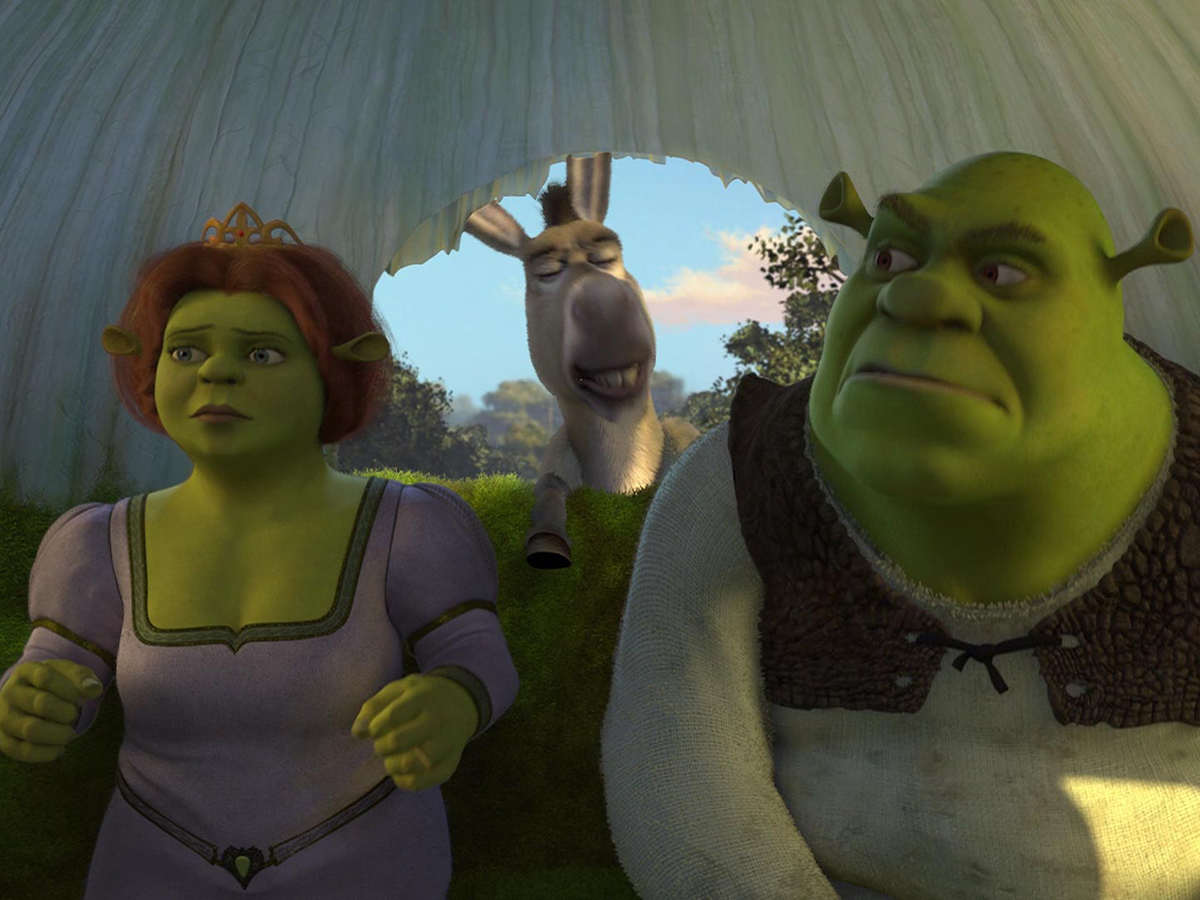
“Shrek 2”’s cult following didn’t start recently — the film made more than five times their budget at the box office, became the highest-grossing film of 2004 and was critically acclaimed. And for good reason: despite being up against notable sequels during the same year, like “Spider-Man 2” and “Harry Potter and the Prisoner of Azkaban,” the ogre and donkey duo left their cultural mark on the silver screen. Audiences can look back at the film fondly not just because it’s an excellent sequel or its superior animation (during the same year that “Polar Express” was released, was no small feat) but also because of its status as a cultural landmark and the impressive juxtaposition to Disney films that it poses.
“Shrek 2” flexes its incredible animation skills from the get-go during a high-powered montage featuring Prince Charming, which transitions the movie seamlessly from its predecessor to this new phase in Shrek and Fiona’s life. The endearing montage that follows, set to “Accidentally in Love” by Counting Crows, rivals even those of classic rom-coms. Like “Shrek,” the soundtrack of the sequel is top-notch in a way that no other animated films were at the time. DreamWorks matched the tone of the scene with popular songs perfectly; now, a lot of the songs are recognizable because of the role they had in the film. Considering that the highest-grossing animated movies at the time included “The Incredibles” and “The Polar Express,” both of which depended on instrumentals; DreamWorks’ reliance on popular music was a bold move — but one that paid off, literally. The soundtrack reached top 10 on the U.S. Billboard 200. Even now, the final scene and its accompanying musical number, “Holding Out For A Hero,” garners much praise and analysis.
Aside from its riveting soundtrack — what other animated movie can feature David Bowie’s “Changes” so flawlessly? — the plot of “Shrek 2” makes for a great sequel. Arguably better than the original, the premise of “Shrek 2” transcends genre. Fiona and Shrek’s relationship is straight out of a rom-com and Shrek and Donkey’s friendship can be interpreted as a buddy comedy. Moreso, Mongo’s tragic death during the climax is downright Shakespearean. There’s so much content and detail packed into the movie, but it feels far from overwhelming. Instead, it adds to the nonsensical worldbuilding and comedic elements that are present throughout. For example, the “Cops” reference during the latter half of the movie as Shrek, Donkey and Puss in Boots are being chased is even funnier due to the rather adult jokes that follow. The scene is so fast that it may be easy to miss Donkey shouting “police brutality!” or Puss in Boots being caught with a baggy of “catnip,” but upon rewatching; the scenes prove that the humor of the film stand the test of time and is surprisingly not distasteful.
Interestingly, all of the traits that make the “Shrek” franchise great is what makes it different from the movies that Disney was releasing at the time. Disney’s early 2000s filmography varied with badly received sequels (“The Jungle Book 2”), earnestly tender animations (“Finding Nemo”) and live-action films targeted at teens (“Freaky Friday”). Sure, some Disney films of the time have reached meme status like “Shrek 2,” while others have reached the same level of critical acclaim. Yet “Shrek 2” is different in that its humor and style managed to achieve both. The last 15 minutes of the film for example, managed to blend emotion, a musical number and comedy in a jam-packed action sequence that remains unparalleled.
DreamWorks went up against the powerhouse that is Disney and managed to make a film that was starkly different for animation at the time and has lasting cultural relevance. “Shrek 2” should be revisited not only because of its objectively compelling plot or vibrant characterizations, but because it now stands as a classic in the animated genre.








